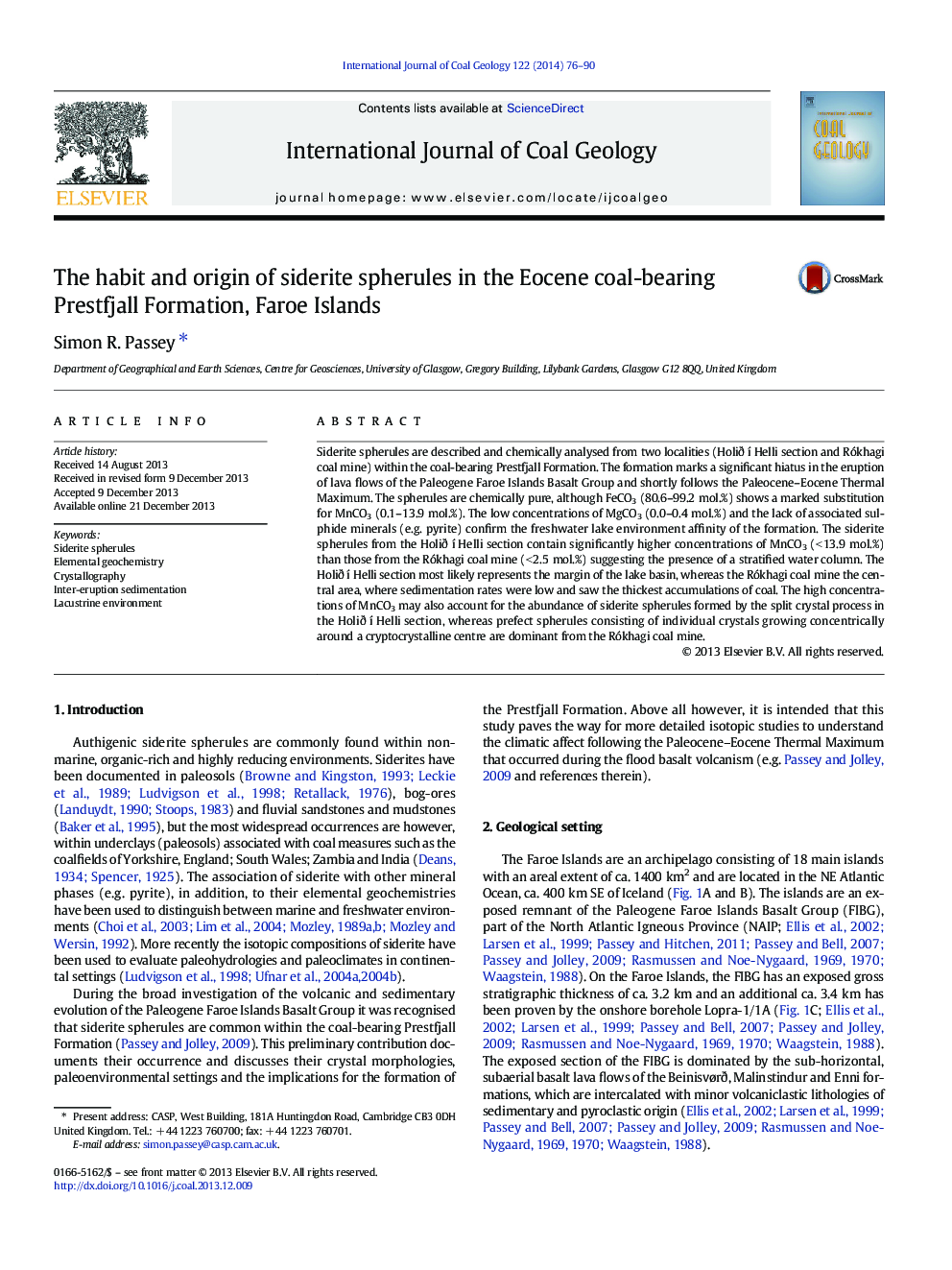| Article ID | Journal | Published Year | Pages | File Type |
|---|---|---|---|---|
| 1753175 | International Journal of Coal Geology | 2014 | 15 Pages |
•Siderite spherules are prevalent in the coal-bearing Prestfjall Formation.•Elemental geochemistry confirms siderite formed in a freshwater lake environment.•There is a marked substitution of MnCO3 for FeCO3.•Split crystals are MnCO3-rich, sphaerosiderites are MnCO3-poor.•Elemental siderite geochemistry reflects basin geometry.
Siderite spherules are described and chemically analysed from two localities (Holið í Helli section and Rókhagi coal mine) within the coal-bearing Prestfjall Formation. The formation marks a significant hiatus in the eruption of lava flows of the Paleogene Faroe Islands Basalt Group and shortly follows the Paleocene–Eocene Thermal Maximum. The spherules are chemically pure, although FeCO3 (80.6–99.2 mol.%) shows a marked substitution for MnCO3 (0.1–13.9 mol.%). The low concentrations of MgCO3 (0.0–0.4 mol.%) and the lack of associated sulphide minerals (e.g. pyrite) confirm the freshwater lake environment affinity of the formation. The siderite spherules from the Holið í Helli section contain significantly higher concentrations of MnCO3 (< 13.9 mol.%) than those from the Rókhagi coal mine (< 2.5 mol.%) suggesting the presence of a stratified water column. The Holið í Helli section most likely represents the margin of the lake basin, whereas the Rókhagi coal mine the central area, where sedimentation rates were low and saw the thickest accumulations of coal. The high concentrations of MnCO3 may also account for the abundance of siderite spherules formed by the split crystal process in the Holið í Helli section, whereas prefect spherules consisting of individual crystals growing concentrically around a cryptocrystalline centre are dominant from the Rókhagi coal mine.
